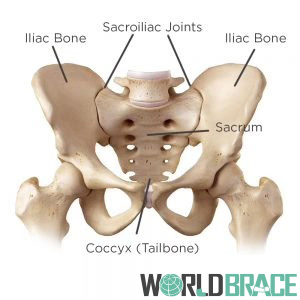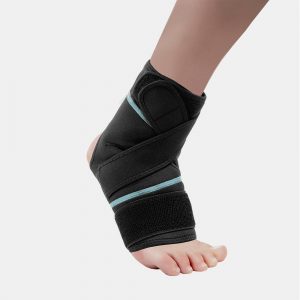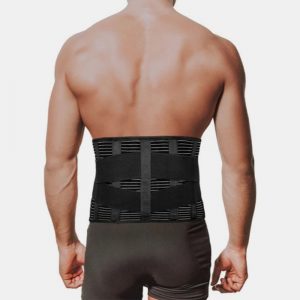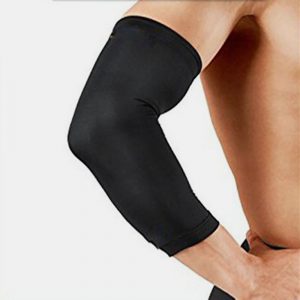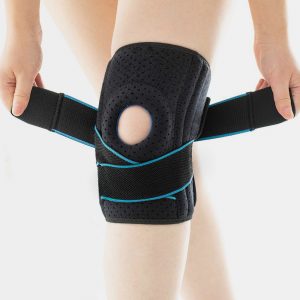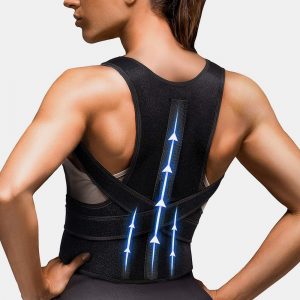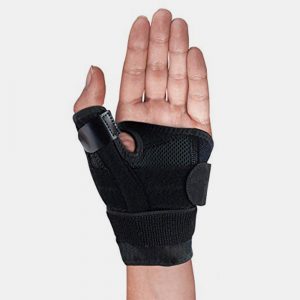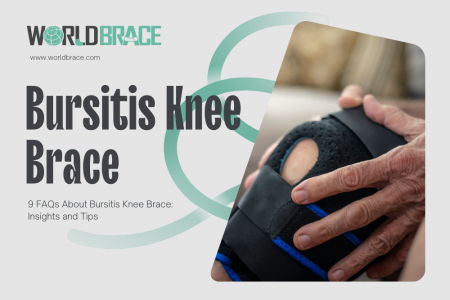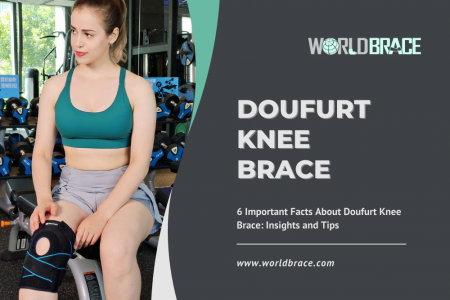
Explain the location of sacroiliac joint pain dysfunction or coccyx pain with this anatomy diagram
Your sacroiliac joint, or SI joint, is at the base of your spine, just above your coccyx. While most of the joints in your body are designed to help you move, twist, turn, etc.These joints are immobile and only allow four degrees of rotation. Although they are standing, they are vital to your daily activities! They help you maintain balance and act as shock absorbers for your spine. These coccyx joints are “self-locking,” which means they lock in when your body is ready to walk, run, or jump. So it’s no surprise that these joints are subjected to a lot of pressure, weight, and tension from the spine…causing SI joint pain (also known as sacroiliac joint dysfunction).
People with SI joint dysfunction are likely to experience lower back discomfort or pain. Additionally, other symptoms that accompany joint pain include:
- Hip, groin, or thigh pain
- Difficulty sleeping through the nigh
- difficult to balance
- burning or stiffness in the pelvis
These symptoms are more common in the morning, after long periods of sitting, or during physical activity that can strain your joints, such as climbing stairs.
I was wondering what causes SI joint dysfunction. Please read our blog for the most common causes of joint pain!
- Anti-inflammatory drugs for tailbone pain relief
This anti-inflammatory drug can help reduce swelling and remove some initial pain in the tailbone. Ice heat therapy relieves sacroiliac joint pain.
- Ice Heat Therapy for Sacroiliac Pain Relief
Alternating between ice therapy and heat therapy is an excellent home remedy for tailbone pain. You use ice on the irritated area to help reduce swelling and inflammation from joint pain. Applying heat to the site will help improve blood flow and relax the common, relieving joint pain.
- Steroid Injections for SI Joint Relief
Another treatment for tailbone pain is steroid injections. Not only does this injection help relieve coccyx pain, but it can also help your doctor diagnose and identify your specific sacroiliac joint pain condition. You may have joint dysfunction if you experience significant relief while doing this.
On the other side of the injection, these will help numb the SI joint, temporarily relieving the pain. This injection is not a permanent treatment option; you may have to endure multiple injections to manage joint pain.
- Correction of abnormal gait is a valuable combination treatment option for SI
An “abnormal gait” is a fancy way of describing someone walking differently or differently. An abnormal gait can be the root cause of joint dysfunction as it puts more stress and stress on the joint. Exercises that combine balance and resistance can help correct or reduce your abnormal gait.
- Lose weight or maintain a healthy weight
Low back pain is joint for those who consider themselves fat or more significant. The extra weight in the belly makes the spine and joints work harder to keep the body upright. If you’re an older man or woman, losing weight will help take extra pressure off your joints, especially the sacroiliac joints.
- Obesity can lead to many other orthopaedic conditions, including knee pain, back pain, osteoarthritis, and more. At WorldBrace, we have an extensive supply of braces to suit everyone and their situation. Check out our weight loss or plus size braces to find the best support for you! If you’re not sure if you’re considered obese or want to know your current BMI level, use this simple calculator to find out!
- Treating the sacroiliac joint with a corset
A sacroiliac joint band like the one above is an excellent tool for treating sacroiliac joint pain! These will help those suffering from the following conditions irritation typically incorporates yoga or Pilates which can improve flexibility and balance.
- Our SI Inflammation Treatment Program also incorporates stretching into your regular regimen. Trying for joint tenderness does involve a lot of movement in the hips, abdomen, and lower back. Stretching these components will help improve flexibility and balance.
- Surgery is an option for treating severe tailbone pain. But those with severe sacroiliac joint dysfunction or those not relieved by the conservative treatment options suggested above may have to undergo surgery to treat coccyx pain. Another option is the iFuse Implant System, a less invasive procedure involving small incisions and a titanium implant’s insertion into the pelvic bone.
We recommend you ask your doctor before determining the best surgical option for your specific situation!
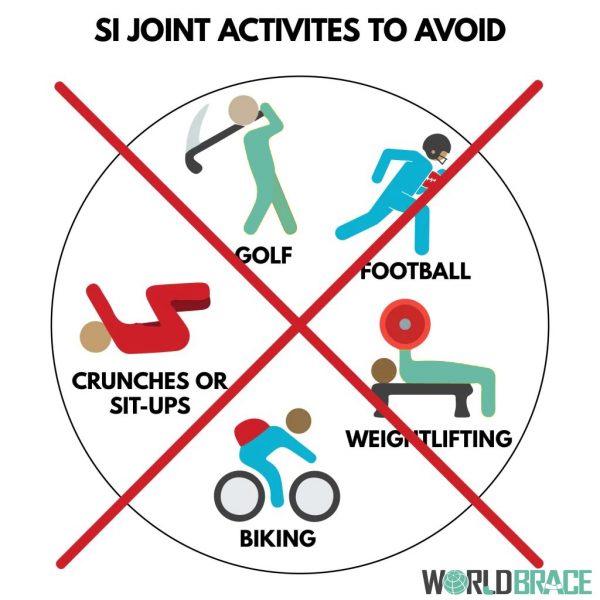
Pregnant woman with sacral pain
There are many different reasons for this problem, and women are more likely to suffer from sacroiliac joint dysfunction. Women have wider hips, one less sacral segment than men, and hormonal changes during menstruation. If you are pregnant, your chances will increase as you get better.
When you’re pregnant, hormonal changes throughout pregnancy can lead to hypermobility of the siliceous joints. Also, carrying extra weight forces your spine to work harder. These all affect your sacroiliac joints. But don’t be nervous. There are many choose to reduce joint pain. Wearing lumbar support, exercising, maintaining a healthy diet, wearing supportive shoes, and proper weightlifting techniques are great ways to relieve pain.
Pregnant women can experience very different back, abdominal and spine pains during pregnancy. WorldBrace has a wide variety of maternity braces, especially for pregnant women, to help them through the journey!

